- News
- Reviews
- Bikes
- Components
- Bar tape & grips
- Bottom brackets
- Brake & gear cables
- Brake & STI levers
- Brake pads & spares
- Brakes
- Cassettes & freewheels
- Chains
- Chainsets & chainrings
- Derailleurs - front
- Derailleurs - rear
- Forks
- Gear levers & shifters
- Groupsets
- Handlebars & extensions
- Headsets
- Hubs
- Inner tubes
- Pedals
- Quick releases & skewers
- Saddles
- Seatposts
- Stems
- Wheels
- Tyres
- Tubeless valves
- Accessories
- Accessories - misc
- Computer mounts
- Bags
- Bar ends
- Bike bags & cases
- Bottle cages
- Bottles
- Cameras
- Car racks
- Child seats
- Computers
- Glasses
- GPS units
- Helmets
- Lights - front
- Lights - rear
- Lights - sets
- Locks
- Mirrors
- Mudguards
- Racks
- Pumps & CO2 inflators
- Puncture kits
- Reflectives
- Smart watches
- Stands and racks
- Trailers
- Clothing
- Health, fitness and nutrition
- Tools and workshop
- Miscellaneous
- Buyers Guides
- Features
- Forum
- Recommends
- Podcast
TECH NEWS
 Canyon launch 2018 - 1 (1).jpg
Canyon launch 2018 - 1 (1).jpgFirst ride: Canyon Grail
The Canyon Grail is a lightweight gravel/adventure bike that climbs beautifully and offers a smooth ride.
For all the details on the Grail’s design, check out our other story on the launch.
Canyon took me out to France a couple of weeks ago and give me the chance to ride Grail for myself. We rode for about three hours in the hills around Nice, maybe 80% of the time on gravelly forest roads, the rest of it on tarmac, usually of dubious quality. We did a lot of climbing, a lot of descending, and we got absolutely soaked. It didn’t stop raining from start to finish (those of you with what I’d call proper jobs – builders, policemen, Punch and Judy puppeteers, stuff like that – are feeling sorry for me now, right?). Despite that, the Grail was an absolute blast (the photos with the grey skies were taken on my ride, the photos with the blue skies are from another day).
Okay, so first of all I need to talk about the Hover Bar because that’s the component that’s unique to this bike. I’m going to go out on a limb here and guess that – how shall I put this? – some people aren’t going to be fully onboard with the Hover Bar’s looks. Call it a gift, but it’s just an inkling that I get based on, you know, life.
That’s your right, of course, but the news is that the Hover Bar works. It does what it’s designed to do.
As mentioned in our news story, Canyon’s argument is that in terms of stiffness a standard handlebar is exactly the opposite of what you want. The drops, which you want to be stiff when you’re sprinting, are the flexiest part while the tops, where you rest your hands when you’re cruising along, offer the least amount of compliance.
The Hover bar has a double deck and the tops don’t come out directly from the stem section. This allows Canyon to build in much more flex than usual – seven times the amount you get with the brand’s H31 Ergocockpit, it is claimed.
In use, can you feel that the tops flex more than usual? Yes. Don’t get me wrong, it in no way feels like a mechanical suspension system – not even close – but there is discernible movement helping to keep the front end smooth and altogether less blurry when you hit the rough stuff at speed.
One other thing I like is that the Grail’s front end doesn’t feel too high, even when your hands are perched up on the top deck. The top of the Hover Bar is actually about 10mm lower than the bar on one of Canyon’s Endurace endurance road bikes, so your position feels efficient and reasonably aggressive – as aggressive as I want to be over bumpy roads. Some brands bin off the idea of efficiency when it comes to gravel/adventure, but Canyon has managed to maintain an up-and-at-’em feel here.
Of course, the Hover Bar isn’t just about that floating top section, you can also rest your hands on the hoods in the normal way, or you can go down to the drops. The position just behind the levers is an interesting one because you can hook your thumbs over the lower deck to give a really secure grip. No matter how bumpy the road surface, your hands never slip.
If you want to move your hands towards the ends of the bar, as promised, you get plenty of stiffness. Even when sprinting out of the saddle, I didn’t feel any significant flex down here. The bar is D-shaped in this area and fits comfortably in your hand, and a 7.5° flare makes for slightly increased leverage and control, and helps prevent your wrists hitting the upper section.
Incidentally, if you’re wondering whether you can rest the palms of your hands on the lower deck, you can’t. Well, that’s not quite true, you can if you want to flatten your forearms parallel to the ground so that your wrists don’t hit the top deck, but it doesn’t feel anything like flattening your forearms with your hands on the hoods. It feels unnatural and not particularly useful, and coming off with your hands in that position wouldn't be pretty, so forget it.
The Hover Bar might be a key feature of the Grail but this bike is by no means a one trick pony. The VCLS 2.0 seatpost provides more comfort. This isn’t a new design but it fits perfectly with the Grail’s design philosophy. In short, you get a seatpost that’s really two separate D-shaped posts that sit right next to one another and are joined at the top by a floating seat clamp. Hit bumps and the seatpost acts as a leaf spring to help absorb the shock while the tilt of the saddle remains constant.
The VCLS design is similar to that of the Hover Bar in that it’s fairly subtle. You don’t really feel it working unless you concentrate on it, but it just cracks on with the job of adding some extra comfort to the ride.
I was riding the Grail CF SLX Disc 8.0 Di2 – the poshest one with a Shimano Ultegra Di2 groupset and Reynolds Assault ATR Disc Carbon wheels which, like all the other models in the range, was fitted with Schwalbe G-One Bite tyres in a 40mm width. My bike was setup tubeless. I didn’t have the chance to fiddle about with tyre pressures but this setup allows you to use a low psi for a load of comfort without running the risk of a pinchflat. The surfaces we rode on ranged from stone to wet and mushy sand and the G-Ones provided a ton of grip, although if you venture off gravel and onto mud you'll want something more knobbly. If you're after a single tyre for riding on both tarmac and gravel, this is a good compromise.
The Grail has a long wheelbase. The medium sized model, for example, with a 52.2cm seat tube, has 42.5cm chainstays and a wheelbase of 102.9cm – about 40mm longer than you get on the Endurace endurance road bike.
The idea is that this provides the stability you need for holding your line when bumps and holes in the road surface are trying their best to knock you off course, while creating enough clearance for wider tyres and eliminating toe overlap.
A long wheelbase can lead to a loss of agility but Canyon specs short stems to make sure that doesn’t happen. Although the stem section of the Hover Bar looks long, the distance that the top of the bar sits ahead of the steering axis is short – 75mm on the medium sized model.
I only had one ride aboard the Grail – this isn’t intended to be a full review by any means – but the handling felt about right to me. Of course, a bike designed to tackle a variety of different surfaces will always be a compromise in some senses, but the Grail handled everything I asked of it with aplomb, holding steady over rocky sections and getting me safely around soggy corners when I worried it might waiver. As we descended, I got more and more confident in its abilities to the point that I was getting borderline reckless, knowing that I’d end up exactly where I needed to be.
In terms of climbing, my early impression is that the Grail is as good as any gravel bike I’ve ridden. It’s lightweight, the rear wheel digs in when you stay seated, and it’s easy to manoeuvre if you decide you need to switch lines to avoid an obstacle or get on to the fastest, most solid bit of track.
Although I was soaked right through in five minutes, I wish my first ride on the Grail could have been longer. It was an absolute blast. Granted, that was partly down to demanding terrain and some fabulous tracks but the bike certainly has loads to offer in terms of performance and comfort. Okay, some people are going to find the look of the Hover Bar to be… challenging. If that’s you, fine, but my experience is that it does its job very successfully.
Mat has been in cycling media since 1996, on titles including BikeRadar, Total Bike, Total Mountain Bike, What Mountain Bike and Mountain Biking UK, and he has been editor of 220 Triathlon and Cycling Plus. Mat has been road.cc technical editor for over a decade, testing bikes, fettling the latest kit, and trying out the most up-to-the-minute clothing. He has won his category in Ironman UK 70.3 and finished on the podium in both marathons he has run. Mat is a Cambridge graduate who did a post-grad in magazine journalism, and he is a winner of the Cycling Media Award for Specialist Online Writer. Now over 50, he's riding road and gravel bikes most days for fun and fitness rather than training for competitions.
Latest Comments
- Rendel Harris 34 min 49 sec ago
That was the whole trick you see, U-boat captains would ask the lookout if there was anything to report and they would reply no, just a couple of...
- SimoninSpalding 36 min 53 sec ago
I came to say the same thing. Unfortunately even with 50 more bikes to come it seems unlikely that I will get together the required money in the...
- mdavidford 36 min 58 sec ago
Except that there are a lot less of those than there are SUVs. And they're generally closer to 'enough vehicle for the purpose', as opposed to the...
- richliv 1 hour 2 min ago
I'm far from being a luddite about new tech but what's the advantage of these over a mini pump which is about as light, occupies the same space in...
- eburtthebike 1 hour 34 min ago
That's one way of looking at it, but not particularly charitable. She's ill and needs treatment, not punishment.
- mdavidford 1 hour 36 min ago
Presumably the car spent the 18 months recovering from its first attempt.
- hawkinspeter 2 hours 7 min ago
Another vote for Bont, here. I bought a new pair of wide-fitting Bont Riot G MTB shoes this year and they're perfect.
- David9694 3 hours 10 min ago
Driver Who Broke Runner's Spine in Three Places Praised for Waiting Around Until Help Arrived
- Steve K 3 hours 47 min ago
Even if this gets to 100,000 signatures, I suspect the Petitions Committee will simply say there has already been a debate, so no need for another...
- mdavidford 12 hours 27 min ago
Obviously it means 'springing out of the bunch' on a critical sector. Or maybe it's referring to the time of year.
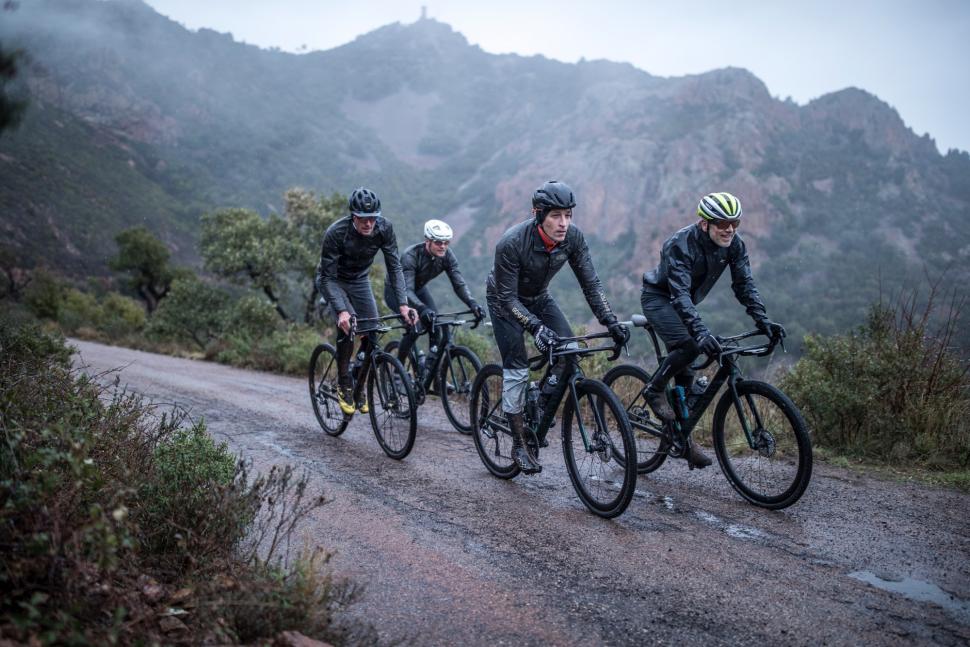
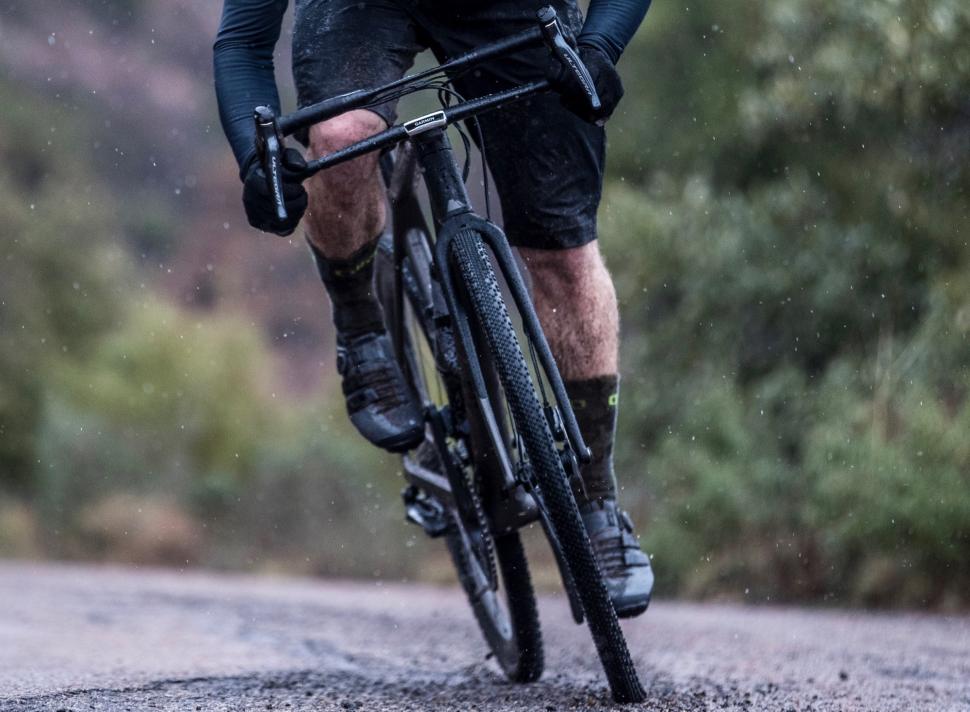
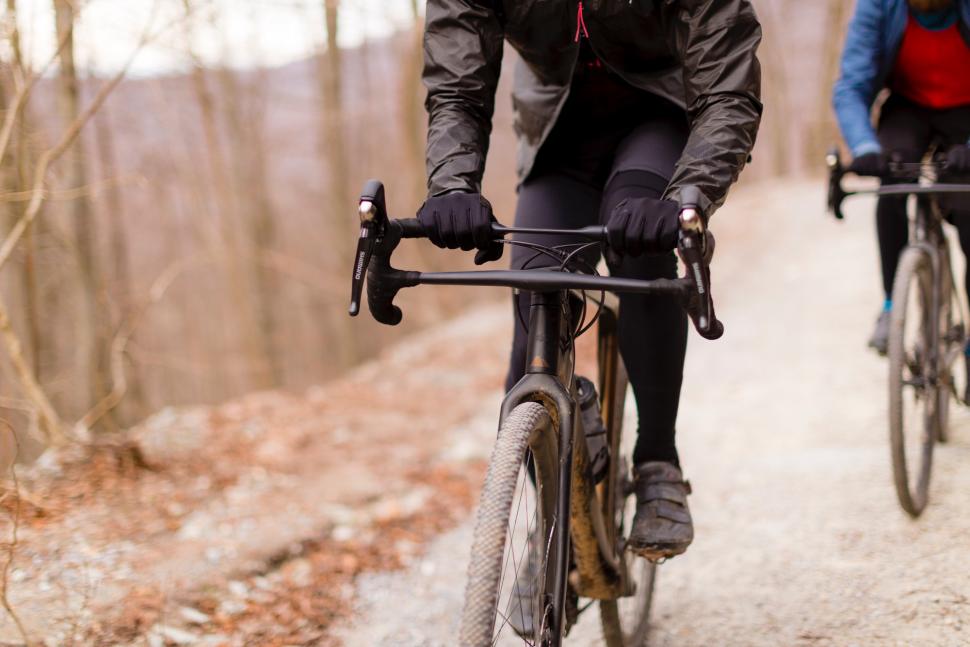
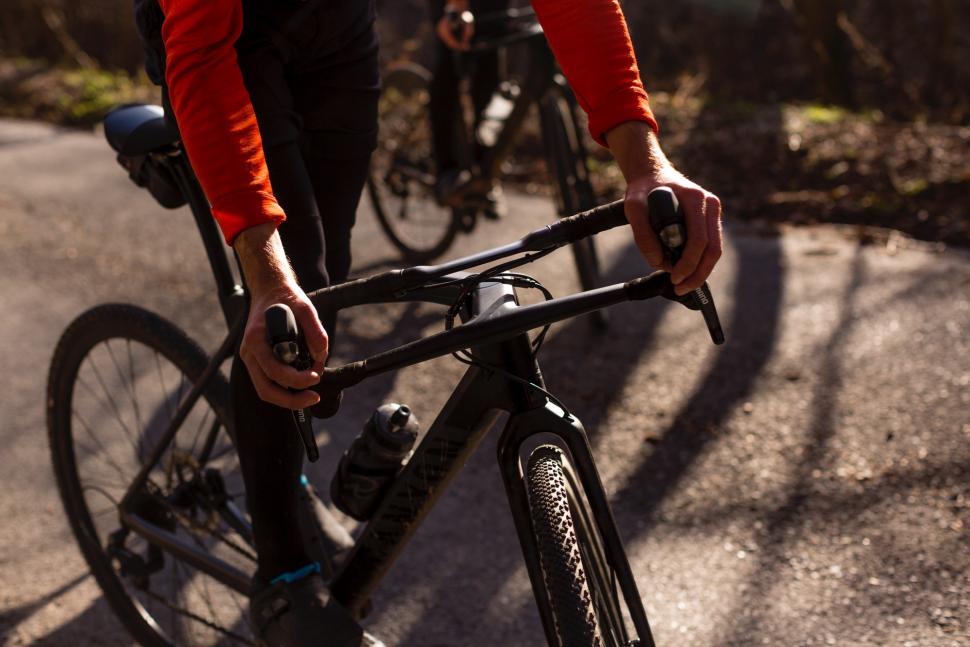
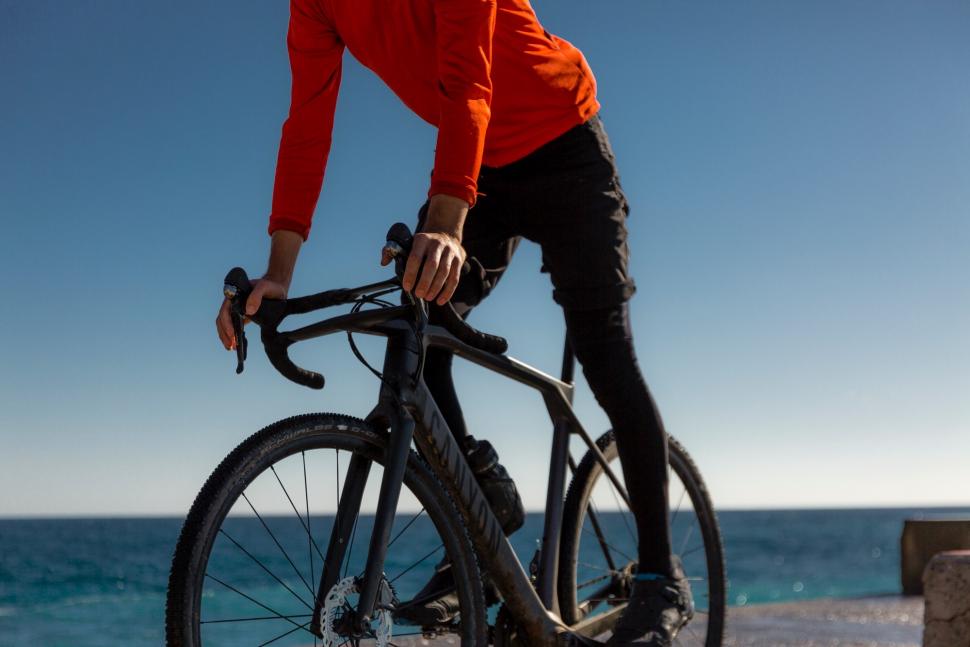



Add new comment
15 comments
+1 for the Redshift ShokStop, fantastic bit of kit for UK roads
I do like to see innovation so have to say that the bar looks interesting (which may be all it needs to do to stand out in an ever more crowded "gravel bike" market) but I'm sceptical about whether or not it will work (or even if it is needed) ... of course if Canyon would send me one I'd be glad to test it out for them
Funny, if Canyon had said, "Oversized handlebars are too stiff, we're going to go back to standard diameter ones for our leisure-orientated models", they would have been portrayed as luddites. But inventing a preposterous geegaw which renders the bike incompatible with everyone else's handlebars, and the cycling press hails them as geniuses (until inevitably it gets included in one of those "What were they thinking" listicles in about five year's time.
I mean really, how much flex is there going to be on the tops when your hand are right on the side of the handlebars? Maybe right in the middle there might be a millimetre or 3 but where your hands actually sit? No, I dont buy it.
I want those bars for sessions on the rollers, they look perfect.
The word "fugly" springs to mind.
The argument for the bar is utterly preposterous, how many times have you ever, EVER, complained that a bar was too flexy at the drops in any of your reviews and that conversely that the rest of the bar wasn't complient enough when riding on the tops? Seriously I'd be intrested to know
Some cheap end bars aren't great at being stiff enough for powerful riders but still manage to transmit vibration more so than a good bar, maybe you'e only ever tested cheap shit handlebars?
Who rides on the tops when you're on rough ground anyway when that's when you want the compliency BUT you also want to have full control so your hands are not on the tops anyway are they?
Aside from the fact the argument for it is bollox and it looks shit it's brilliant.
How do you adjust stem length/rise, what about bar width? Others have found the transition from tops to hoods is a bit ropey.
Oh and yet again the myth that pinch flats are an issue at low pressures with tubed tyres, and yet again I'm going to tell you it isn't, even less so with a 40mm tyre, which if you knew anything you'd know that already. Also other testers have said those tyres are only any much cop on tarmac or compacted grael surfaces, certainly not on soft off road terrain with little grip.
£4,000 for Ultegra Di2 so it's not cheap, you say lightweight, compared to what, a R531 Super tourist???
My carbon bike has a 105cm wheelbase and 44cm chainstays (for a 58), is equally adept on road and off, has room for wide tyres, so basically the Canyon is a hybrid bike isn't it?
Off-road, on my CX bike, loads. Towpaths, relatively simple trails where you want to be a bit more upright, not be smashing it along. Dirty Reiver the other year was a classic case of LONG sections of fireroad where you just wanted to sit and cruise in comfort but didn't need to touch the brakes or gears.
To be honest in the UK (where LONG sections of actual gravel road are few and far between) I'd much rather have a CX bike as an all-rounder. But for long distance off-road touring in areas of the world where you can end up going along bloody miles of gravel track day after day, I can see the point. I actually quite like it. Also it'd be dead stable for fixing a bar bag, you've got two struts there to tie it into.
That's a carbon strut - I imagine if you engineered it right you could have seveal centimetres of flex in it. Carbon struts like that can be bent almost double if you only anchor one end. It's the same principle used in carbon leaf springs. Or indeed in carbon seatposts.
That's a carbon strut - I imagine if you engineered it right you could have seveal centimetres of flex in it. Carbon struts like that can be bent almost double if you only anchor one end. It's the same principle used in carbon leaf springs. Or indeed in carbon seatposts.
[/quote]
Yeah I get that carbon fibre can be engineered to flex (I once met a guy in a pub who's cousin used to live with a mechanical materials engineer), but what I am saying is surely there can't be that much movement as where your hands are postioned on the top of the bars is right next to the hoods where it is made to be stiff. It would be interesting to see one in the flesh so to speak and test it out.....
This is not a gravel bike mr canyon... there should be a smaller grating at front and err, a lower priced model?? and what is this front shit!!!???
Reminds me of Greg Lemond's Scott bars....
Wish I'd had one of these bars last August when I rode 320 miles all offroad from Headingley to Wembley on my alloy GT Grade. The canal towpaths were a killer - my hands still haven't recovered. May not be the most aesthetically pleasing development in bike technology of recent years but Canyon are to be congratulated on their spirit of innovation.
If you want to do something similar again without a competely new bike, I've had good results over the last year on my Grade with the Redshift ShockStop system and a Cane Creek Thudbuster LT seatpost.
Just setting up a new bike at the moment with similar but upgraded arrangement. This time Ergon/Canyon VCLS 2.0 type seatpost (lighter and less maintenance), but will be sticking with the ShockStop out front.
Looks interesting! I can see the unsupported section working well over long climbs, but most of the time people tend to ride on the hoods anyway, don't they?
Does it affect the possibility of using a rackless bag at the front? They could add a couple of small attachment points on that lower bar and you could have a great quick release bag interface, less reliance on straps etc.
Hover bar... now there's a thing now isn't it. Hmm.. for some strange reason which I am as yet unaware, I am getting an urge to want to head butt it.